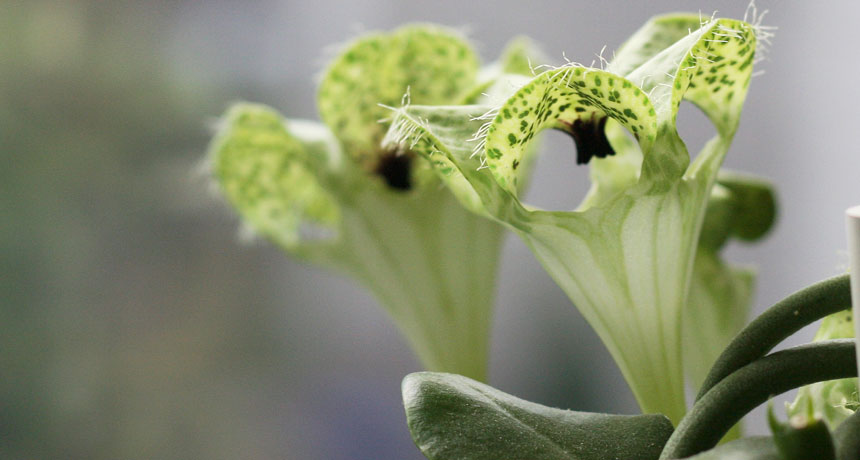Flower lures pollinators with smell of honeybee fear

A South African flower catches flies with honey, or in this case, the smell of honeybees.
Several plant species lure potential pollinators with false promises of sweet nectar, sex or even rotting flesh. But Ceropegia sandersonii attracts its primary pollinator, Desmometopa flies, with the scent of fear. The flower mimics the chemical signals, or pheromones, released by alarmed western honeybees (Apis mellifera) during a predator attack. For flies that feast on the bees’ guts, it’s the perfect bait, Stefan Dötterl, a chemical ecologist at the University of Salzburg in Austria, and colleagues report online October 6 in Current Biology.
The team compared the compounds that make up the flower’s scent with pheromones released by the bees during simulated attacks. Not only did the two odors have several compounds in common, but the flies were strongly attracted to a mixture of a few of the shared compounds. That chemical cocktail has so far been observed only in the bees and C. sandersonii, the researchers say.
Before flies have a chance to wise up to the trickery, they become trapped inside the flower. The flies eventually escape about a day later, once the flower wilts, only to be duped by other flowers to finish the fertilizing task, Dötterl says.